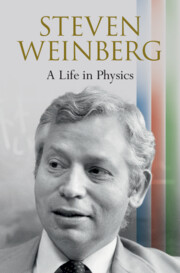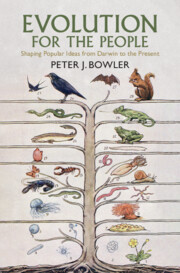Refine search
Actions for selected content:
13575 results in History of science and technology
Acknowledgments
-
- Book:
- Charles Darwin
- Published online:
- 05 December 2024
- Print publication:
- 28 November 2024, pp x-xii
-
- Chapter
- Export citation
2 - Before Darwin
-
- Book:
- Evolution for the People
- Published online:
- 21 November 2024
- Print publication:
- 28 November 2024, pp 25-55
-
- Chapter
- Export citation
3 - The Origin of Species
-
- Book:
- Charles Darwin
- Published online:
- 05 December 2024
- Print publication:
- 28 November 2024, pp 36-57
-
- Chapter
- Export citation
7 - Philosophy
-
- Book:
- Charles Darwin
- Published online:
- 05 December 2024
- Print publication:
- 28 November 2024, pp 116-142
-
- Chapter
- Export citation
8 - Social Evolutionism
-
- Book:
- Evolution for the People
- Published online:
- 21 November 2024
- Print publication:
- 28 November 2024, pp 186-216
-
- Chapter
- Export citation
5 - Evolution in the Twentieth Century
-
- Book:
- Charles Darwin
- Published online:
- 05 December 2024
- Print publication:
- 28 November 2024, pp 80-99
-
- Chapter
- Export citation
6 - Challenging Darwinism
-
- Book:
- Evolution for the People
- Published online:
- 21 November 2024
- Print publication:
- 28 November 2024, pp 138-166
-
- Chapter
- Export citation
Preface
-
- Book:
- Evolution for the People
- Published online:
- 21 November 2024
- Print publication:
- 28 November 2024, pp ix-xii
-
- Chapter
- Export citation
6 - Normal Science
-
- Book:
- Charles Darwin
- Published online:
- 05 December 2024
- Print publication:
- 28 November 2024, pp 100-115
-
- Chapter
- Export citation
2 - Charles Robert Darwin
-
- Book:
- Charles Darwin
- Published online:
- 05 December 2024
- Print publication:
- 28 November 2024, pp 20-35
-
- Chapter
- Export citation
10 - Toward the Modern World
-
- Book:
- Evolution for the People
- Published online:
- 21 November 2024
- Print publication:
- 28 November 2024, pp 233-257
-
- Chapter
- Export citation
9 - The Evolutionary Synthesis
-
- Book:
- Evolution for the People
- Published online:
- 21 November 2024
- Print publication:
- 28 November 2024, pp 217-232
-
- Chapter
- Export citation
Contents
-
- Book:
- Charles Darwin
- Published online:
- 05 December 2024
- Print publication:
- 28 November 2024, pp vii-vii
-
- Chapter
- Export citation
Copyright page
-
- Book:
- Evolution for the People
- Published online:
- 21 November 2024
- Print publication:
- 28 November 2024, pp iv-iv
-
- Chapter
- Export citation
3 - Reacting to the Origin
-
- Book:
- Evolution for the People
- Published online:
- 21 November 2024
- Print publication:
- 28 November 2024, pp 56-83
-
- Chapter
- Export citation

Steven Weinberg: A Life in Physics
-
- Published online:
- 22 November 2024
- Print publication:
- 12 December 2024

Evolution for the People
- Shaping Popular Ideas from Darwin to the Present
-
- Published online:
- 21 November 2024
- Print publication:
- 28 November 2024
Acknowledgments
-
- Book:
- Agricultural Science as International Development
- Published online:
- 14 November 2024
- Print publication:
- 21 November 2024, pp xiii-xiii
-
- Chapter
-
- You have access
- Open access
- HTML
- Export citation
Copyright page
-
- Book:
- Five Innovations That Changed Human History
- Published online:
- 01 November 2024
- Print publication:
- 21 November 2024, pp iv-iv
-
- Chapter
- Export citation
9 - Fifty Years of Change in Maize Research at CIMMYT
- from Part III - Science in the System
-
-
- Book:
- Agricultural Science as International Development
- Published online:
- 14 November 2024
- Print publication:
- 21 November 2024, pp 209-233
-
- Chapter
-
- You have access
- Open access
- HTML
- Export citation
